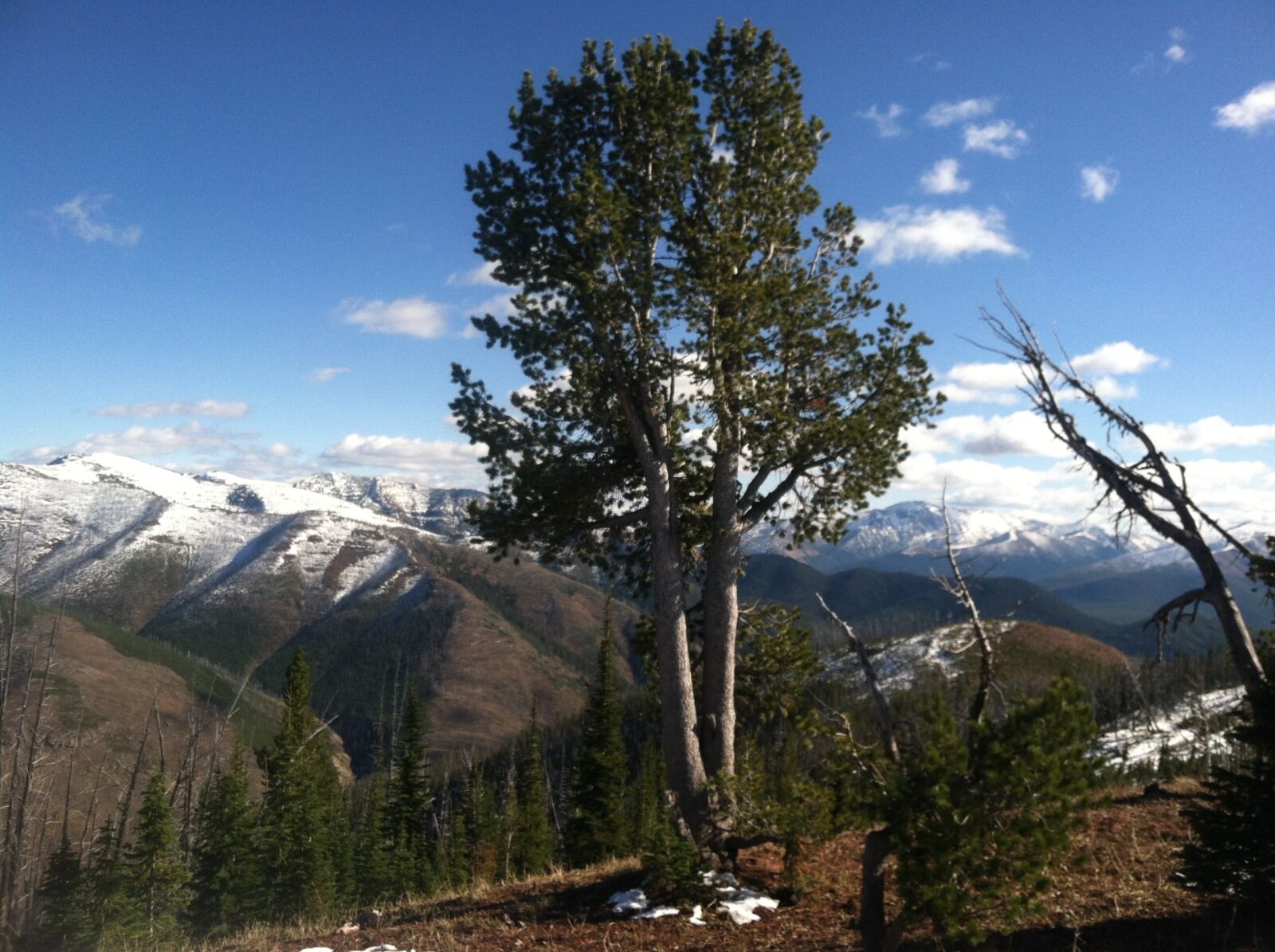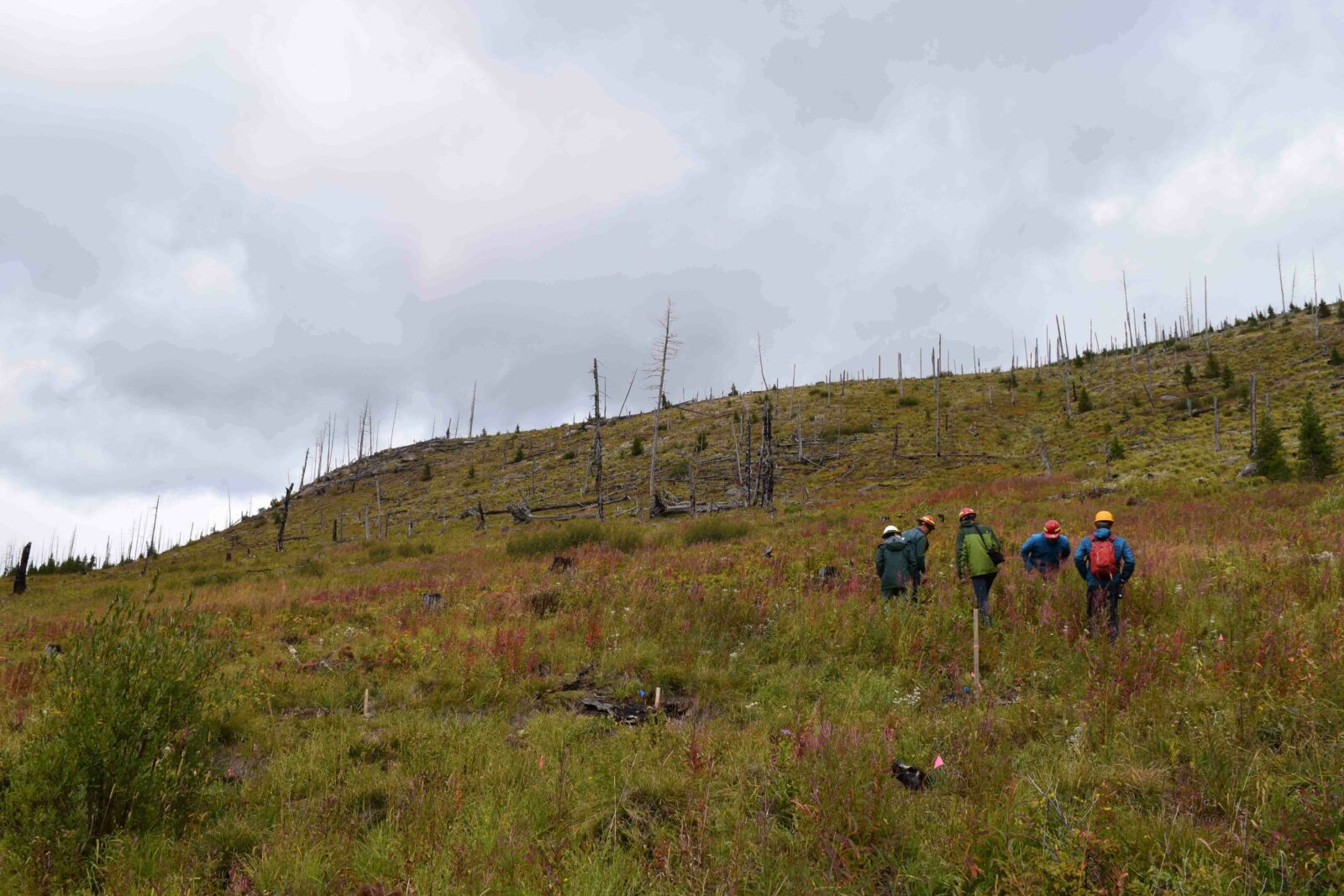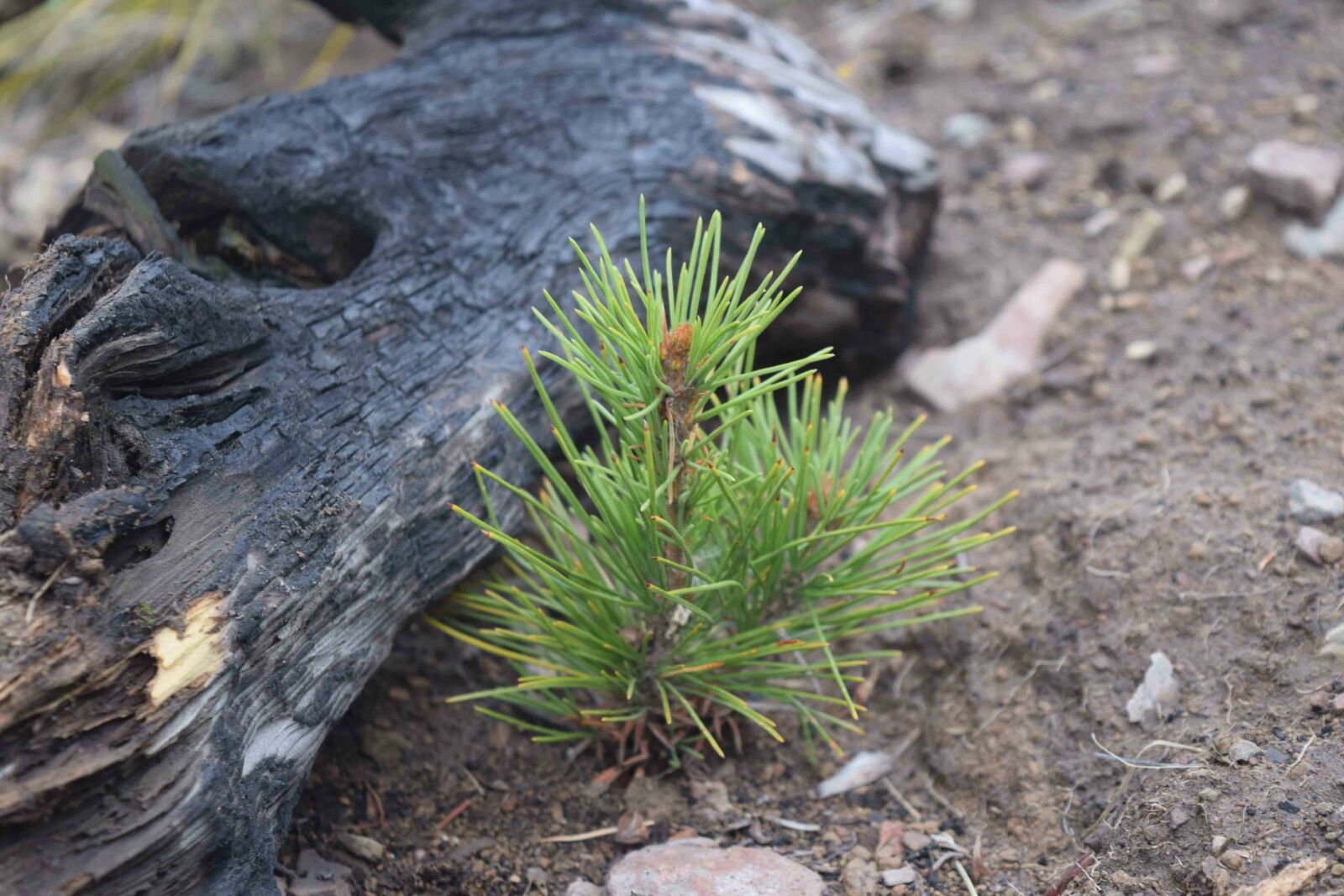A Stately Tree
Perhaps my favorite tree out there is the whitebark pine (Pinus albicaulis). Standing up to one hundred feet tall and presiding exclusively on high elevation ridges and mountains, whitebark pine trees are the gnarled stalwarts of the western high country. Because of their preferred habitat, the vast majority of whitebark pines are found on public lands, especially National Forests.
Since whitebark pines thrive in subalpine areas that receive substantial snowfall, they play a pivotal role in the hydrology of the western watersheds. Whitebark pines trees often have bifurcated tops (or “split tops”), which means they cast a large shadow that helps accumulate and maintain high elevation snowpack. Because these snowpacks take longer to melt in the spring, they help extend stream flow periods throughout the summer.

Photo by Wes Swaffar
A healthy whitebark pine tree on a ridege top deep in Montana’s Scapegoat Wilderness.
Whitebark pine are also very valuable member of the ecological community. They are considered a “keystone” species and are well known for their mutualistic relationship with their avian partner, the Clark’s Nutcracker. Their calorie-dense seeds provide an important food source in exposed, food-scarce environments and are a favorite among squirrels and grizzly bears. As scientists continue to unveil more information about the important role they play, concern over their range-wide decline has prompted land managers to apply new techniques to save the species.
A Declining Species
Decades of wildfire suppression have negatively impacted whitebark pine ecology. Infrequent, low-level wildfires historically helped remove fire-intolerant species such as subalpine fir and Engelmann spruce from competing with whitebark seedlings. Without fire, these competitors grow faster than whitebark pine, ultimately converting these forests to be fir and spruce dominated forests. Additionally, warming temperatures caused by climate change have allowed the ever-present mountain pine beetle to become more effective tree killers in subalpine areas where whitebark pine live.
Although fire suppression and mountain pine beetle have taken a toll on the whitebark pine, the primary cause in their decline is from the presence of white pine blister rust, an invasive fungal disease from Europe. The spread of white pine blister rust has caused a decline of up to 90 percent in many locations, leaving “ghost forests” of standing dead pine trees. But amidst the hundreds of dead trees on ridge tops, there is an occasional outlier – a healthy whitebark pine that shows resistance to the infectious disease. Hope for whitebark pine’s future lies in these trees.

Photo by Wes Swaffar
A “ghost forest” of dead whitebark pine trees in Montana’s Bob Marshall Wilderness.
Reforestation
To see the front line of whitebark pine restoration, I didn’t have to look any further than Montana’s Flathead National Forest. Directly adjacent to Glacier National Park and covering more than 2 million acres of mountainous terrain, the Flathead National Forest contains many of the high elevation ridges that whitebark pine call home. Despite the suitable habitat, whitebark pine’s story is no different here – Flathead National Forest staff have seen an enormous decline of the species across the Forest. I traveled there with my fellow NFF colleague, Hannah Ettema, to see the plight of whitebark first hand and understand how reforestation efforts are making a difference.
We spent the morning meeting with Flathead National Forest staff Melissa Jenkins, Karl Anderson and Paul Jorgenson. Each are actively engaged in what they consider to be one of the most important restoration efforts on the Forest. After discussing the factors that have led to whitebark pine decline on the forest, they explained the innovative techniques that they are employing to restore this imperiled species.
Healthy individual trees, while hard to find, hold the key for whitebark pine’s long term survival. Their healthy condition, despite the presence of pathogens, suggests a genetic resistance to infection by white pine blister rust. To bolster the next generation of whitebark pine trees, the U.S. Forest Service collects seed bearing cones from the tops of these trees, transports them to a state-of-the-art Forest Service nursery in Coeur d’Alene, Idaho, and grows them for two years. The young seedlings are then transported back to the Forest where they are planted in an area adjacent to where the cones were originally collected.

Hope for the Future
After gaining an introductory knowledge on these reforestation strategies, the Flathead National Forest staff took us to see the results of their efforts. We gained a thousand feet of elevation driving until the road ended just shy of the Continental Divide. We climbed a ridge to look at young whitebark pine seedlings that were planted just three months earlier with support from one of the NFF’s leading reforestation partners, Caudalie.
It was apparent that the reforestation crew planted the seedlings with great care, each seedling tucked away in a “microsite” that offers shelter from the elements and an improved chance at survival. The young trees were vibrantly healthy, blending in well with their new environment. Looking out across the many ridges that are now full of dead trees, it’s daunting to fathom the extent of whitebark pine mortality. But looking down at these healthy young trees gave us a feeling of hope for their future.

To learn more about whitebark pine restoration, see the U.S. Forest Service’s Region-Wide Restoration Strategy for Whitebark Pine.
This reforestation project was supported with funding from Caudalie USA. Caudalie and the NFF have committed to planting 1 million trees together by the end of 2018. Learn more about their reforestation commitment here.

